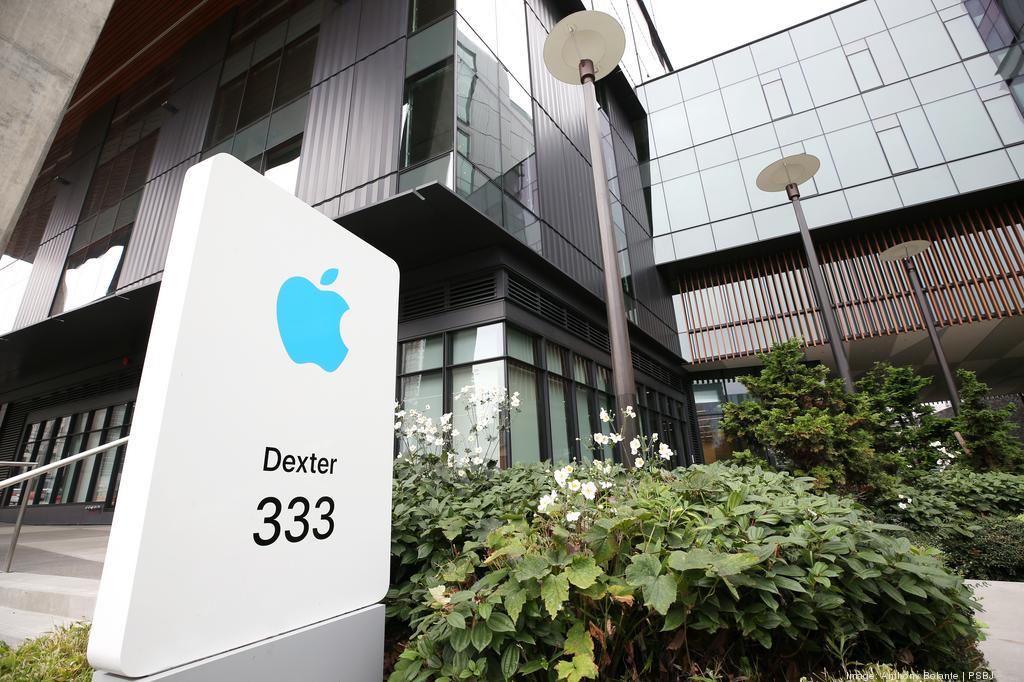
Apple delayed full implementation of a return-to-office plan in the spring because of another Covid-19 surge. The company’s office in Seattle’s South Lake Union neighborhood is pictured here.
The news last week that Apple Inc. would, once again, fully implement its hybrid return-to-office plan has, once again, led to a protest by a group of Apple employees angry about it.
Starting right after Labor Day, Apple says it will require all of its corporate employees to work from their Apple offices every Tuesday and Thursday. That’s a change from the company’s previous order, which would have had employees on site for three days a week, with Mondays being a mandatory third day.
But the Silicon Valley-based computer titan — the most valuable company in the world and an employer of at least 1,000 workers in the Seattle area — has changed that approach and will leave the choice of a third day up to individual teams.
That’s not enough flexibility for the group AppleTogether, which on Monday launched a petition drive demanding that employees should be allowed to work with their managers to determine the best schedule for them and the company. In other words: no set work days in the office.
“We believe that Apple should encourage, not prohibit, flexible work to build a more diverse and successful company where we can feel comfortable to ‘think different’ together,” the petition said.
As of 2 p.m. Monday, the petition had more than 510 signatures.
“Those asking for more flexible arrangements have many compelling reasons and circumstances: from disabilities (visible or not); family care; safety, health, and environmental concerns; financial considerations; to just plain being happier and more productive,” the petition said. “The one thing we all have in common is wanting to do the best work of our lives for a company whose official stance is to do what’s right rather than what’s easy.”
Besides the demand for employees and managers to work together on finding the right work schedule, the petition also says that their agreed-upon work schedules “should not require higher level approvals, complex procedures, or providing private information.”
Apple’s original return-to-office plan started April 11, with a demand that workers be in the office one day a week. The company’s intent was to have employees settled into the Monday, Tuesday and Thursday routine by May 23.
But in early May, a survey on the anonymous social network Blind found that 76% of Apple employees who took the survey said they were not happy with the company’s approach to bringing workers back after more than two years of fully remote work because of the pandemic.
Apple later halted its plans, but not because of employee anger. It delayed its full implementation because of another Covid-19 surge.
In June, Apple CEO Tim Cook said that the company was “trying to find a place that makes the best of both of these worlds,” meaning the desire of employees to work remotely and management’s need to have workers in the office.
“We’re running the mother of all experiments because we don’t know,” Cook said during an interview at the Time 100 symposium.